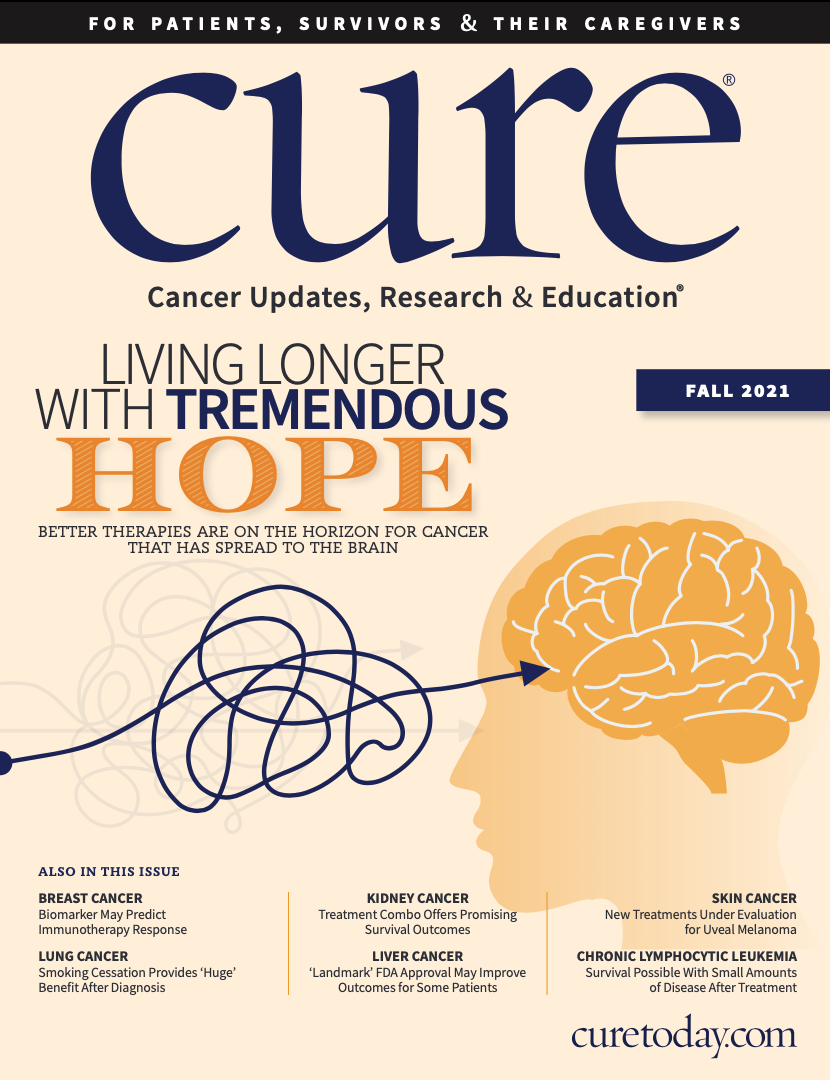Publication
Article
CURE
Keeping Hope in Your Back Pocket as a Patient With Cancer
Author(s):
When a patient’s disease stops responding, doctors can usually offer patients several options for a next treatment that will accommodate the patient’s needs and goals, or patients can consider a clinical trial.
What happens when a patient's disease stops responding to particular cancer treatments? As disheartening as it may feel, it’s no reason to lose hope. Today, different treatments are available along the cancer journey to provide options for patients.
Cancers can become resistant to treatment because patients are living longer and on treatment for years. In addition, cancer can evolve over time, changing how it responds to a particular treatment.
When a patient’s disease stops responding, doctors can usually, depending on the specific type of cancer, offer patients several options for a next treatment that will accommodate the patient’s needs and goals. Patients can also consider enrolling in clinical trials or obtaining a second opinion. No matter what option a patient selects, having a choice gives patients the opportunity to steer their cancer journey in the direction they want to go.
In this issue of CURE®, we speak to two patients with cancer whose disease stopped responding to treatment. One patient with advanced non-small cell lung cancer was responding well to chemotherapy and immunotherapy, but a year later, scans indicated swollen lymph nodes. She took the news in stride because she knew she had a targeted therapy option “in her back pocket,” so to speak, that she could use
next (it was originally explained and offered as a potential treatment after she received her biomarker test results). Another patient with advanced colorectal cancer that had spread to his lungs decided to get a second opinion about his next best treatment option after he had tried various treatments that were ineffective for the spots on his lungs, which continued to multiply. This patient believes the second opinion saved his life. We also speak with several experts who emphasize the importance of education and knowing your options when cancer stops responding to treatment.
In addition, a feature article examines not only the effects of cancer on a patient’s body but also the patient’s relationship with their partner. We speak with one couple whose relationship strengthened after the start of her Hodgkin lymphoma journey. We also learned another patient’s story involving a relationship that could not withstand the stress of her breast cancer journey. She was able to overcome body image issues and develop more confidence.
You’ll also meet two women who were pregnant when they received a diagnosis of cancer. Advances in care have made it more possible for women to be treated for cancer while pregnant, although it’s still a very difficult journey. Learn more about these women’s different outcomes as well as an ongoing, long-term, observational research study that has been collecting information about the diagnosis and treatment of cancer in pregnant women since 1997 — and continues to inform oncologists about what’s possible.
Also in this issue: the benefits of combination therapy for advanced renal cell carcinoma; a nurse who climbed a mountain in Alaska with a group of patients, family members and advocates for multiple myeloma; and how quitting smoking after receiving a lung cancer diagnosis may still add years to your life.
As always, thank you for reading.
For more news on cancer updates, research and education, don’t forget to subscribe to CURE®’s newsletters here.






